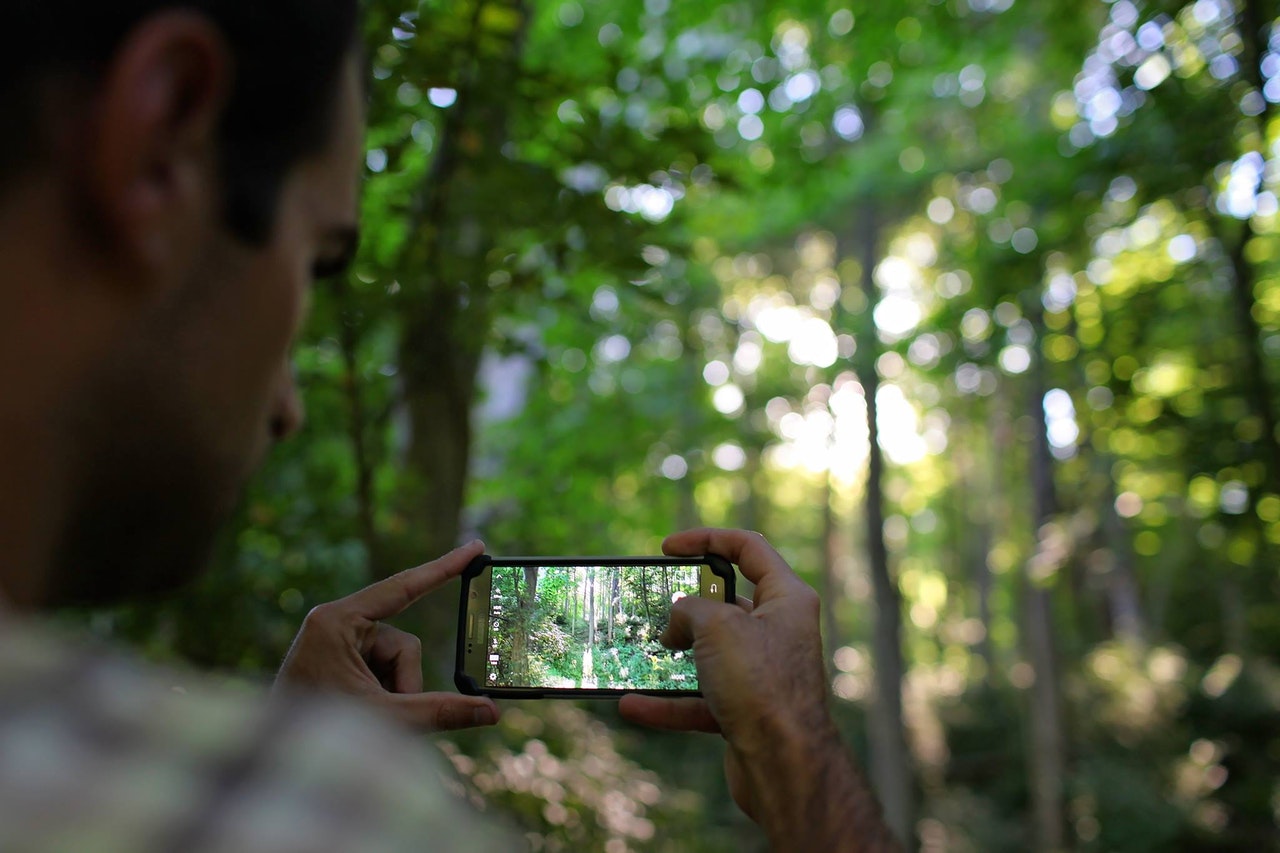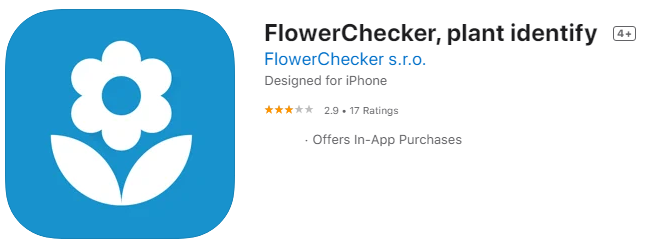If you’re a plant lover like me, you may relate to the excitement and curiosity of discovering species you weren’t familiar with and learning all about them. Whether you have plants at your home or you come across some during your morning walk, knowing about their unique needs can help you take optimal care of them. This is where a plant identification app comes in.
Identifying a plant is all fun and games until you encounter species you never knew existed. The excitement can slowly turn into frustration, especially when you don’t have someone with botanical knowledge around. The day I got to know about plant identification apps, my heart leaped!
I will also be answering the burning question: What is a plant identification app? I’ll share all the details of how it works, so you can decide if it’s worth your time and energy. I personally love it – and I know you will too if you’re a true flora enthusiast!
Moving forward, we’ll shed light on how to choose one by comparing different options out there. I’ll talk about four plant identification apps that you can use on your iOS or Android device.
Let’s get started!

Plant Identification App
As the name suggests, a plant identification app allows you to identify different plants by photographing them on your mobile phone. From flowering plants, ferns, cacti, and conifers to trees, grass, wild salads, and vines, you can explore and learn about a wide range of plants found in nature.
You must have seen multiple plants that look too similar from afar. Often, it’s the little details that distinguish one plant species from another. Typically, the clearer the visuals you provide to the app, the higher your chances of getting accurate identification.
With that said, the photos you take of the plants on the app are usually collected and stored for scientists to analyse later. These experts use the data to expand their knowledge base regarding the evolution of plant biodiversity and find efficient ways to preserve these species across the world.
The best thing is that you can find various plant identification apps for your smartphone. This means you can pick your favourite based on your unique needs and preferences.
Which Plant Identification App Should You Choose?
Whether you’re an Android or iOS user, you can find multiple plant identification apps out there. Some of them don’t charge anything to use, while others charge you a fee.
Let’s dive right in to explore the various options you have.
Plant Identification Apps
Plant Net
Plantnet markets itself as a “citizen science biodiversity project.” This plant identification app is home to more than a million plant photos. It features three project categories:
- Geographical projects covering plants from all corners of the world
- Thematic projects featuring cultivated and ornamental plants
- Micro projects focusing on the flora of a specific local region
Plantnet stores the plant images in its database and can identify only those plant species whose photos have previously been shared by a user. This plant identification app can help you identify and learn about 20,000+ species.
With that said, the photo quality and project category choice can make all the difference. An added benefit is that the app shows options for similar plants when you upload a photo, so you can confirm your choice and get accurate information.
You can download Plantnet on your iOS or Android device.


iNaturalist
A collaborative venture of the National Geographic Society and the California Academy of Science, iNaturalist is a plant identification app that allows gardeners, botanists, and plant enthusiasts to share plant images through its social network.
Users can capture photos and feed them into the database. The app leverages image recognition technology to identify different plant species. If a photo is unclear, the app suggests alternative options to verify user choice.
While the users confirm and share observations, the plant identification app creates research data. In addition to plants, you can explore animals, insects, and butterflies on iNaturalist. It also allows you to browse observations in your area and get updates on upcoming nature projects near you.
Whether you have an iOS or Android phone, you can download this app. You can register yourself through Google, Facebook, or email.


Paid Plant Identification Apps
PictureThis
This plant identification app has identified more than 27 million flora species using advanced artificial intelligence. These identifications are claimed to be 99% accurate.
Apart from plant identification, this app shares helpful plant care tips related to efficient pest control and watering with the users. This top-rated app is an excellent social network platform for plant lovers and nature enthusiasts.
If you’re interested in using this plant identification app, you can opt for a 7-day trial. After that, you’ll automatically sign up for a one-year subscription.


FlowerChecker
FlowerChecker is a one-of-a-kind plant identification app that relies on a manual plant identification system. Instead of following a computer-based approach, they have an expert team dedicated to sorting through and analysing the photos received from users before posting identification on the app.
While this obviously takes more time, the team claims that they post 50% of the responses within an hour. Furthermore, they charge a small fee for each correct answer.


Now that you know more about different plant identification apps for iOS and Android, it’s time to go out to explore unknown plants and flowers!
Plant Identification DataBase
Plant identification databases have revolutionized the way plant enthusiasts, gardeners, and botanists explore the world of flora. These databases not only make it easier to identify and learn about various plant species but also contribute to the broader understanding of plant biodiversity and conservation.
The Power of a Plant Identification Database
A plant identification database serves as the backbone of any successful plant identification app. It is a repository of plant images, descriptions, and data collected from various sources, including user submissions, research institutions, and botanists. Here’s how a comprehensive plant identification database can benefit app users and the scientific community:
Accurate Identification:
A database containing a vast number of high-quality plant images, along with detailed descriptions, ensures accurate identification. With a more extensive database, users can expect better results when using their preferred plant identification app.
User Engagement
A comprehensive plant identification database encourages users to contribute their observations and images, fostering a sense of community and collaboration. This active engagement not only enriches the database but also supports the development of a global network of plant enthusiasts.
Scientific Research
A well-maintained plant identification database serves as a valuable resource for scientists and researchers studying plant biodiversity, evolution, and conservation. The data gathered can provide insights into the distribution of plant species, the impact of climate change, and the need for targeted conservation efforts.
Education and Awareness
An extensive plant identification database helps educate users about the fascinating world of plants. It allows people to discover new species, learn about their unique characteristics, and understand the vital role they play in ecosystems.
Key Features of an Ideal Plant Identification Database
To create a comprehensive plant identification database, it is essential to focus on the following features:
Extensive Coverage
A valuable database should cover a wide range of plant species, including flowering plants, ferns, cacti, conifers, trees, grasses, and more. This diversity ensures that users can identify plants from various regions and ecosystems.
High-quality Images
Clear, high-resolution images are crucial for accurate identification. The database should include photographs that highlight essential plant characteristics, such as leaves, flowers, fruits, and bark.
Detailed Descriptions
Alongside images, the database should provide in-depth information about each plant species, including its habitat, distribution, growth habits, and potential uses.
Regular Updates
To maintain the relevance and accuracy of the plant identification database, it is vital to update it regularly. This process involves adding new species, refining existing data, and incorporating user feedback.
User-friendly Interface
A well-designed database should be easily accessible and navigable, allowing users to search for plants by various criteria, such as name, location, or physical characteristics.